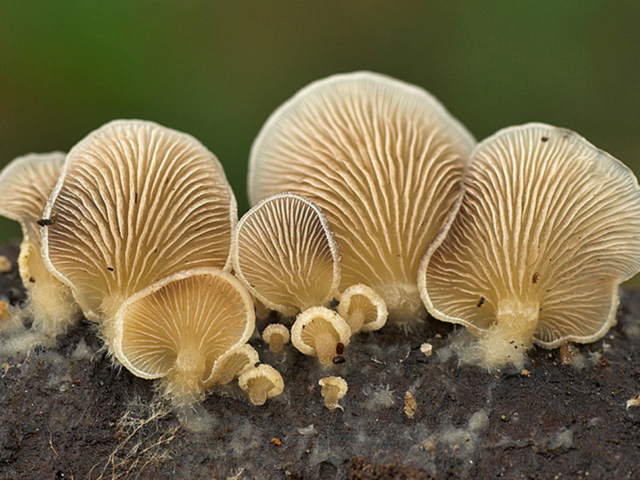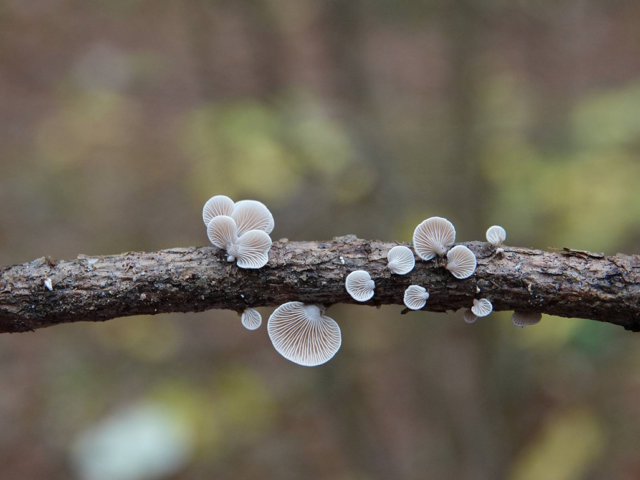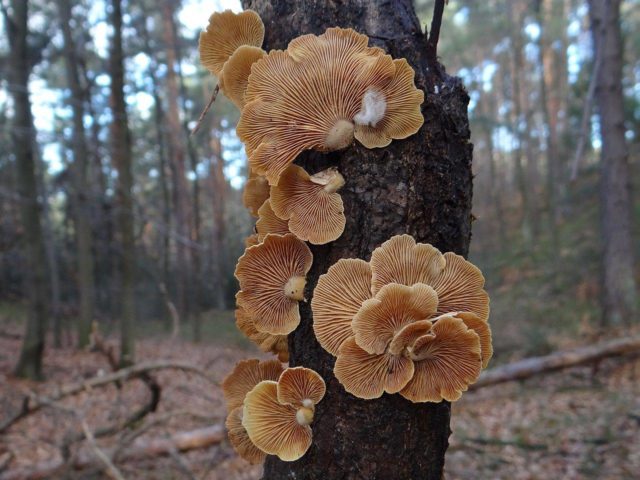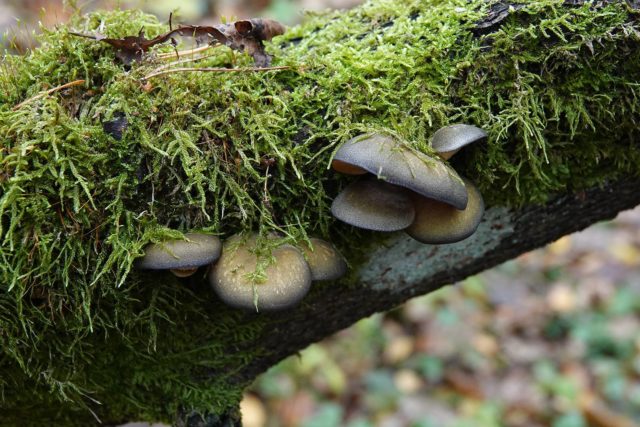Content
Panelus soft belongs to the Tricholomov family. He loves to settle on conifers, forming whole colonies on them. This small cap mushroom is distinguished by its delicate pulp, which is why it got its name.
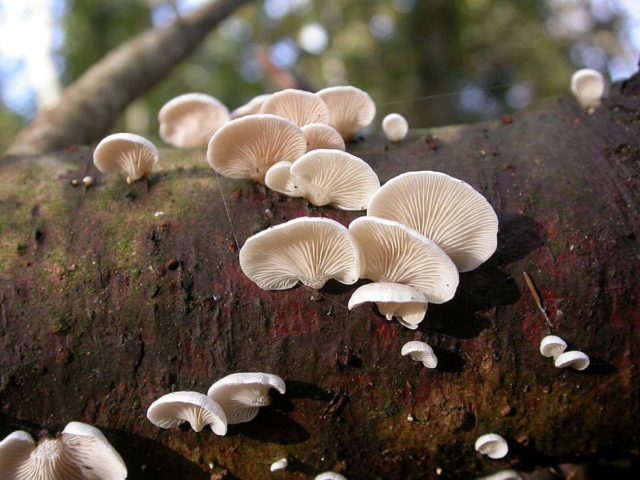
A distinctive feature of the species - it settles in colonies on the trunks of coniferous trees
What does panellus look like?
The fungus has a fruiting body (stem and cap). Its pulp is moderately dense. It is whitish in color, very moist and thin.
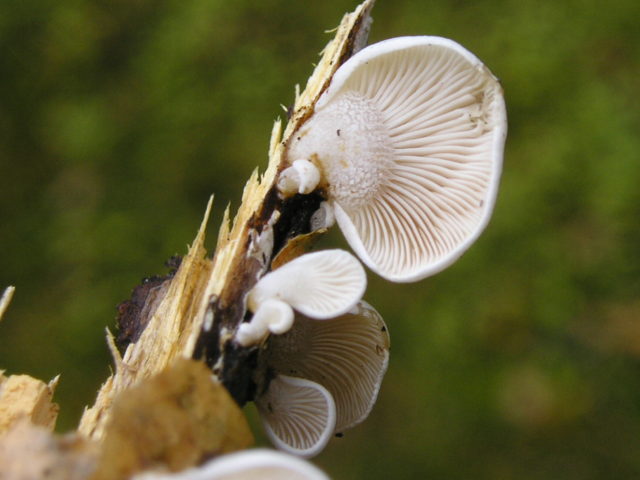
The mushroom is small in size
Description of the hat
The cap is very small, from 1 to 2 cm, occasionally occurs with a diameter of about 3 cm. At first, it looks more like a kidney in outline, then as it grows, it acquires a rounded and convex shape. Has slightly serrated edges. The cap grows laterally to the rest of the fruiting body. In young specimens, it is sticky and fleecy to the touch. At the base, its color is pink with a brown tint, the main part is white. The mushroom is lamellar, the elements are quite thick, whitish or pale-yellow, sometimes forked.
Leg description
The leg of the soft tender panel is very short, always lateral, and does not exceed 5 mm in length. Its average diameter is 3-4 mm. Near the plates (above), the leg is slightly wider. Its entire surface is covered with a bloom of small particles resembling cereals. The color of the leg is white. It is fibrous in structure.
Where and how it grows
The main fruiting period is autumn, less often it appears at the end of August. Prefers coniferous and mixed forest zones. It covers the trunks of fallen trees, fallen branches. Most of all, soft panelellus settles on coniferous residues - fir, spruce, pines.
Is the mushroom edible or not
The soft panel has a distinctive radish-like aroma. There is no unequivocal opinion about its edibility. Officially, Panellus soft belongs to the inedible category, although there is no confirmation of its toxicity.
Doubles and their differences
Panellus soft has many twins among the representatives of the Tricholomov family. The most similar to it is an inedible mushroom - astringent panellus. It differs in that it has a yellow color of varying intensity (similar to clay, ocher). Astringent panelellus is very bitter in taste, astringent, usually grows not on conifers, but on oak. This is the main characteristic by which novice mushroom pickers distinguish it. Also, Panellus astringent, unlike soft, can glow in the dark. It contains a special pigment capable of bioluminescence and glows green.
Also, a double is an autumn oyster mushroom, a conditionally edible mushroom. The size of its cap does not exceed 5 cm, sometimes without a stem. But it has a darker, gray color, slightly slimy to the touch. There are specimens of a greenish or brown hue.Autumn oyster mushroom does not settle on conifers, prefers deciduous (birch, maple, aspen, poplar).
Conclusion
Penellus soft is a typical representative of its family. Small white caps that cover the trunks of fallen conifers do not attract the attention of lovers of quiet hunting. The mushroom is considered neither toxic nor edible. Therefore, mushroom pickers do not attach much importance to it, bypassing it in search of delicious specimens.
